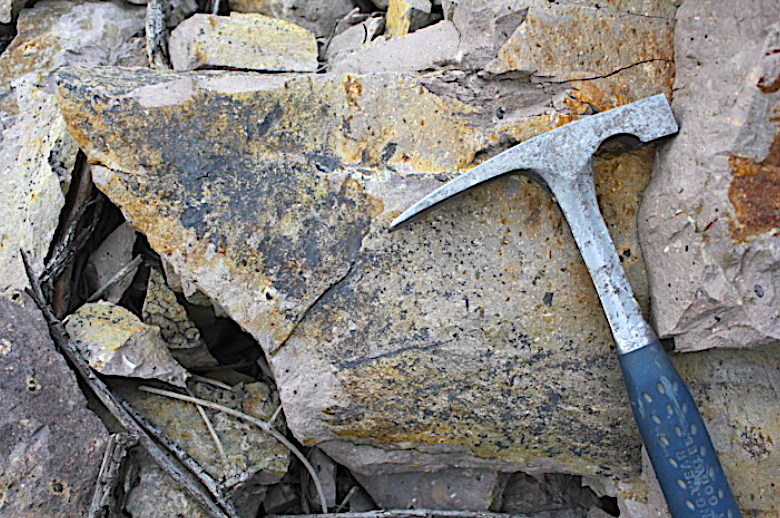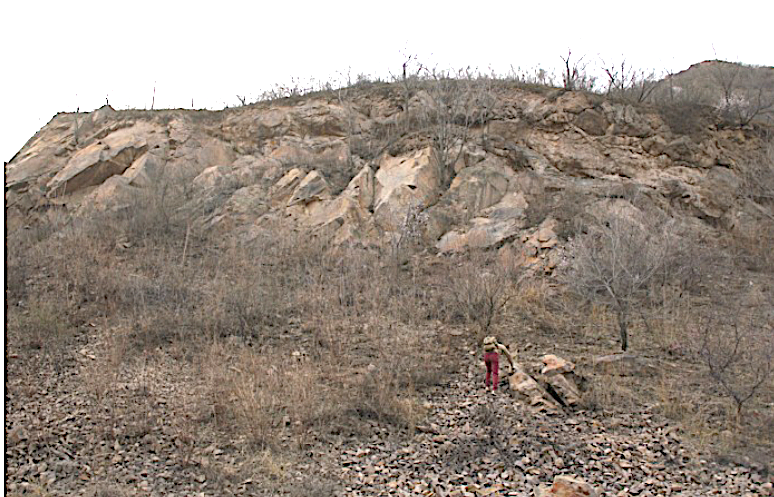Zhangjiakou Fm
Type Locality and Naming
N. Hebei. It was named by R. Pumpelly as the Zhangjiakou Porphyry in 1866. The naming locality is situated in the vicinity of the Zhangjiakou City of Hebei Province, with its reference section being located in the area extending from the Jiangniwan region to the Yuanbao Mts in the vicinity of Zhangjiakou City.
Lithology and Thickness
Basal part is composed of purple, and dark-violet tuffaceous gritstones and pebble-bearing gritstones; Lower part, of grey-violet and grey-white rhyolitic tuffs; its Middle part, of grey-violet and grey-white quartz-trachytes and trachyandesites, intercalated with rhyolitic tuffs; and the Upper part, of grey and grey-violet rhyolitic breccias and rhyolites; with a total thickness of 1805.2 m.
[Figure: Volcanic rock from type section of Zhangjiakou Formation in Luanping, Hebei Province]
[Figure: Zhangjiakou Formation of Zhangjiagou section in Luanping, Hebei Province]
Relationships and Distribution
Lower contact
It overlies unconformably the Archean gneisses. In the Luanping Basin it is also in a disconformable contact with the underlying Tuchengzi Fm (or locally equivalent of Houcheng Fm). At Shangxi-north (Cret 25b column), the next older unit is indicated as the Tiachihe Fm of Middle Jurassic.
Upper contact
It is in a disconformable contact with the overlying Dabeigou Fm or the Nantianmen Fm.
Regional extent
The formation is distributed extensively in the northern Hebei region, and is developed essentially in the areas of Zhangjiakou City, Guyuan, Chicheng, Fengning, Chengde, Luanping, Weichang, Chongli and Xiabancheng. There are few differences between various regions in the lithology of the particular formation, but with a great variation in its thickness, as being of 3867 m in the area of the Qipan Mts of Weichang region; of 2688 m in the Dushikou area of Chicheng County; of 2821 m in the Sichakou area of Fengning County; and of only 622 m in Luanping County.
GeoJSON
Fossils
In the Dushikou area of Chicheng County it yields small amount of plant fossils as represented by Schizolepis morlleri, and insect fossils as Coptoclava sp.
Age
Depositional setting
Additional Information

